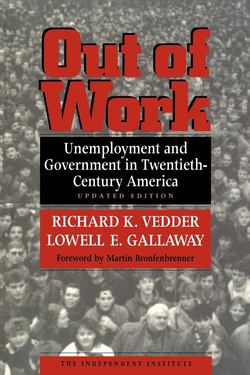Читать книгу Out of Work - Richard K Vedder - Страница 41
На сайте Литреса книга снята с продажи.
EVIDENCE FROM THE IRON AND STEEL INDUSTRY
ОглавлениеReaders of the last chapter and the discussion above might be dubious of our statistical evidence on the relationship between real wages and unemployment on the grounds that we are dealing with highly aggregative data for the whole economy. Do our findings hold if we reduce the analysis to the level of the individual industry? Is there some sort of “aggregation bias” that gives a false wage-employment relationship that falls apart when individual industry wage, price, and productivity data are used?
Fortunately, data exist to examine the relationship between factory employment and money wages, prices, and labor productivity on a quarterly basis for 1919 through the second quarter of 1923 for the iron and steel industry, one of the nation’s largest.21 That industry underwent wrenching changes in the period, with steel output in the third quarter of 1921 being two-thirds less than in the first quarter of the previous year.
The findings tend to confirm the wages hypothesis. A regression model explaining iron and steel employment in terms of metal prices (largely iron and steel), money wages in the steel industry, and output per worker in that industry, using quarterly data, works well, explaining nearly 93 percent of the variation in steel industry employment over that period. That variation was extraordinary, with employment dropping almost precisely 50 percent between the first quarter of 1920 and the third quarter of 1921. The expected positive relationship between prices, productivity, and employment is observed, statistically significant at the 1 percent level. The expected negative relationship between money wages and employment is not obtained; there is evidence, however, of multicolinearity (strong intercorrelation among the variables in the model.)
To deal with this, we eliminated one variable by using a model regressing real wages and productivity against employment; it works in the expected fashion:
where STELEMP is employment of production workers in the iron and steel industry; RLWAG is the real wage, unadjusted for productivity change; PRDTY is productivity per worker, and numbers in parentheses are standard errors; an autoregressive adjustment term is omitted. All variables are indexed with the first quarter of 1919 equal to 100.
The model works as predicted. Increases in real wages are associated with reduced employment (increased unemployment), while productivity and employment are positively related. Both variables are significant at the 1 percent level, and the model explains over four-fifths of the considerable variation in employment over the four-and-a-half-year period.
